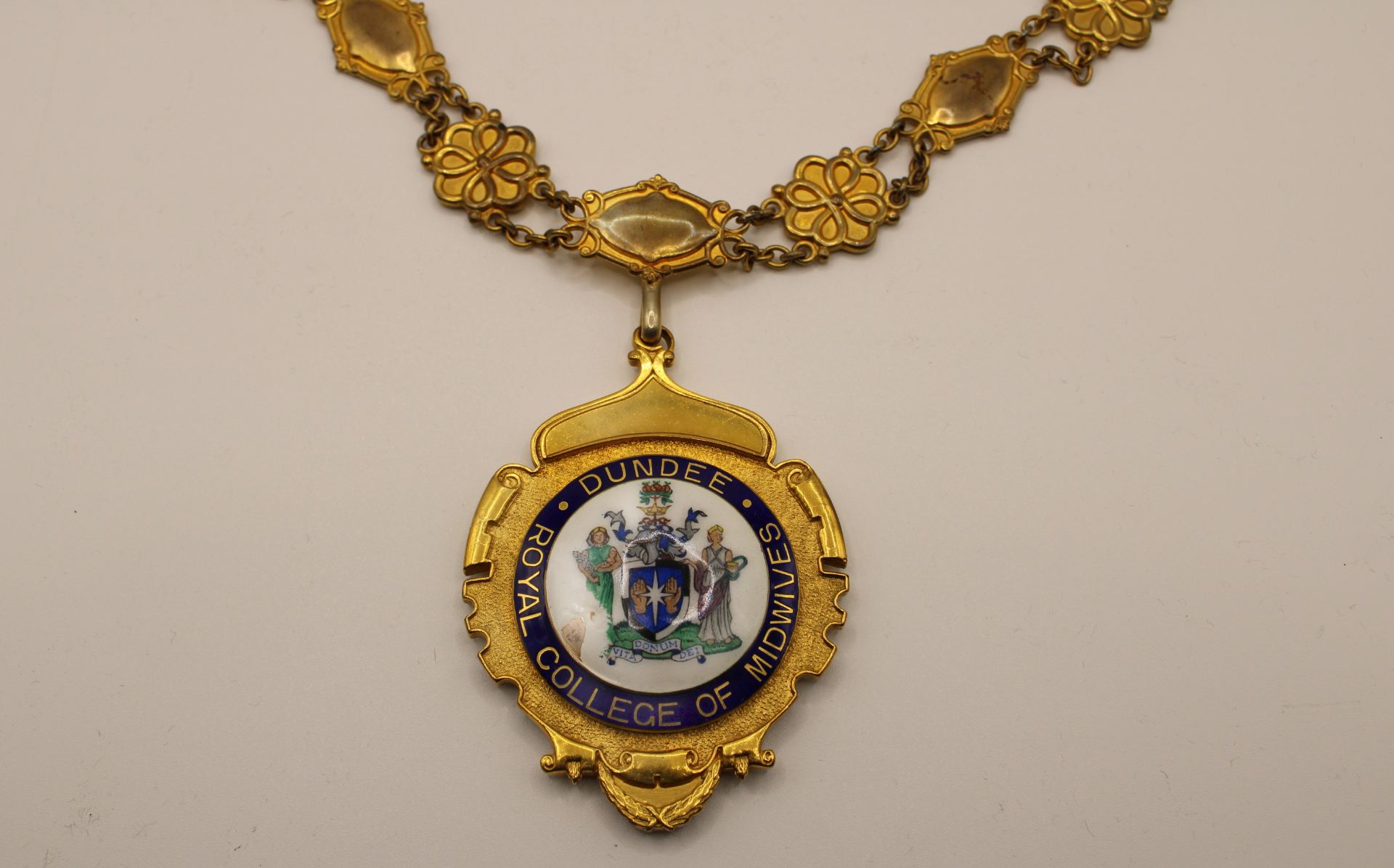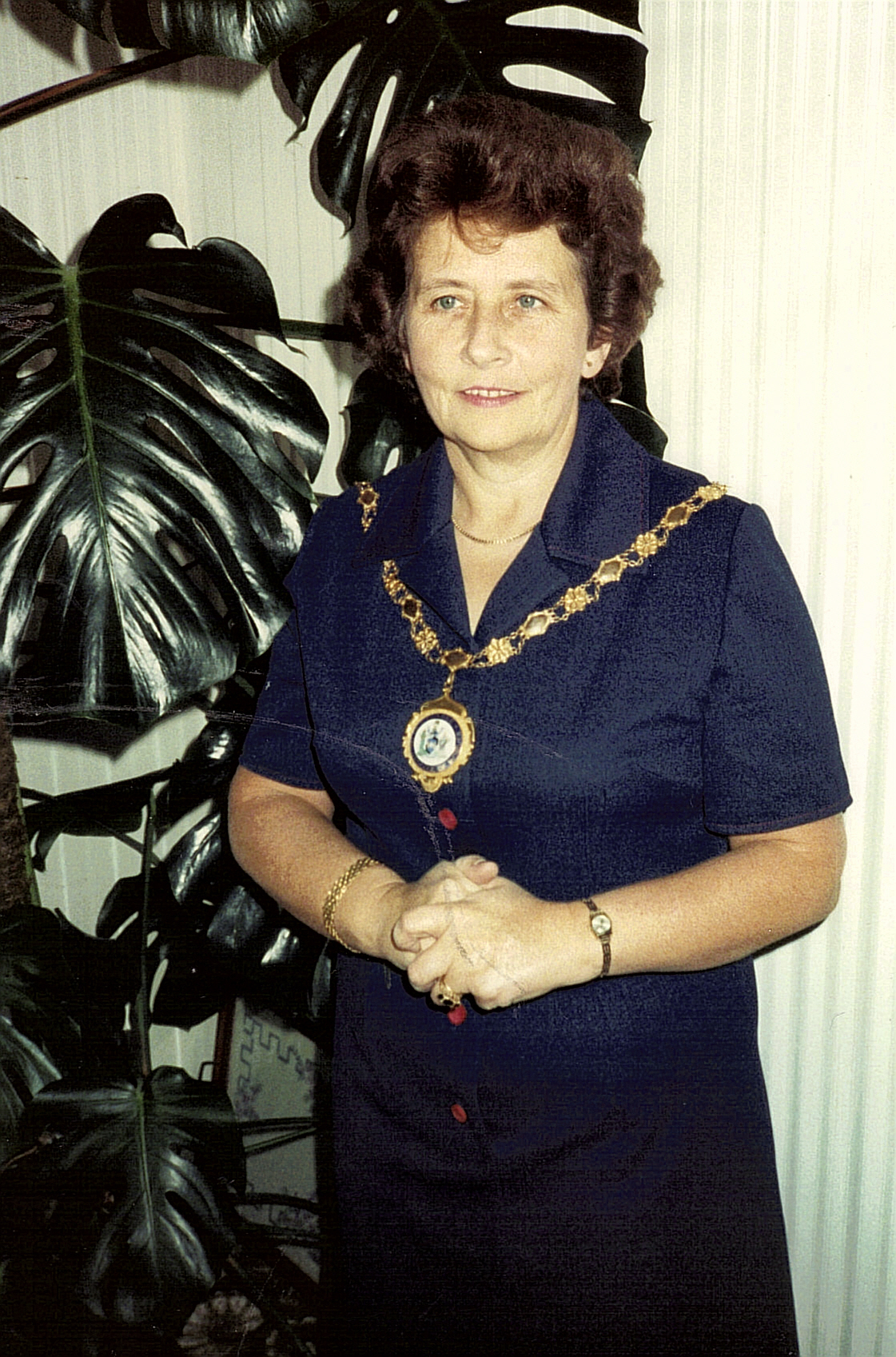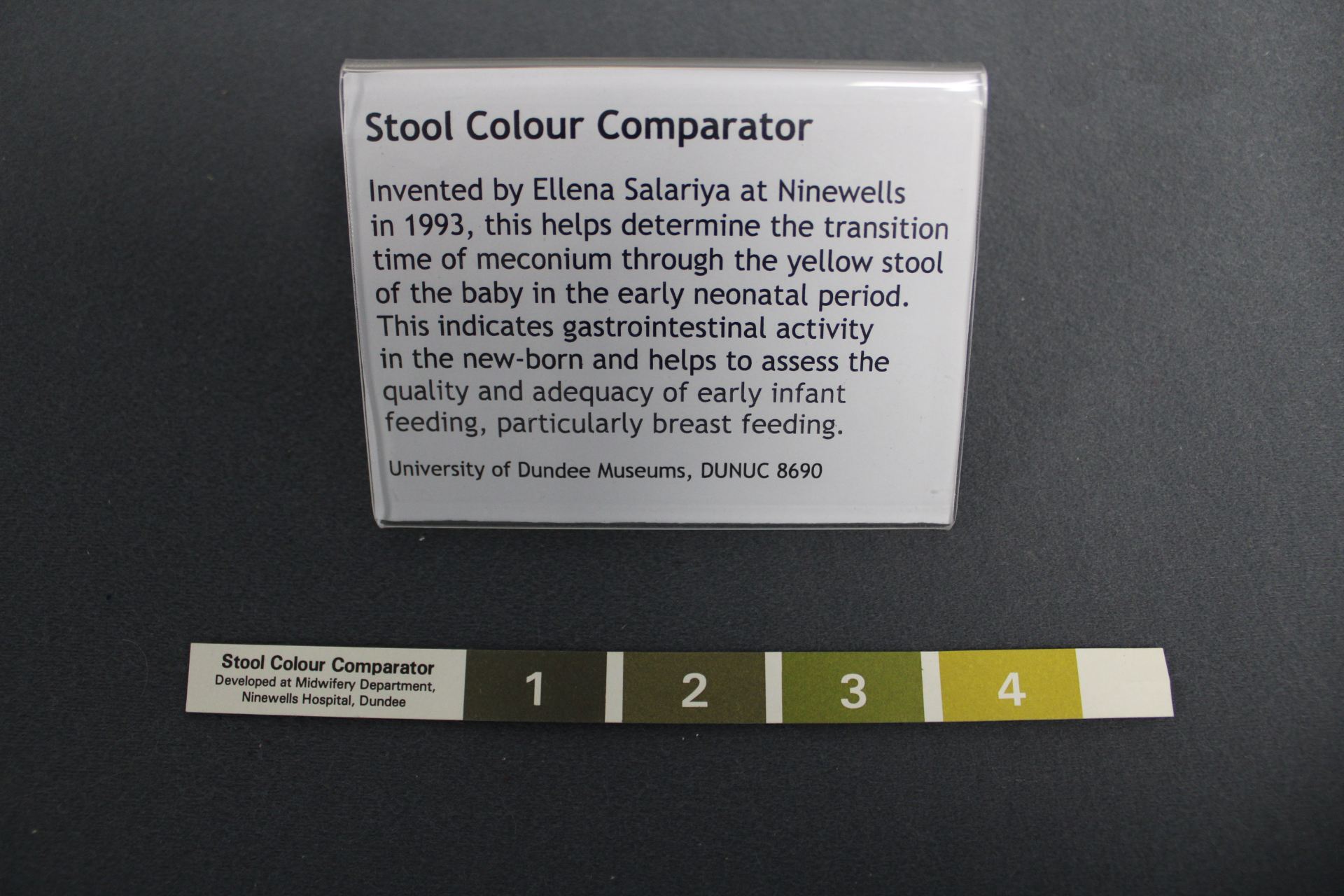This blog post was written by Medical Students, Kirsten Healey and Hannah Dalioui as part of their Selected Student Component working with the collections at the Tayside Medical History Museum. SSCs are an important part of medical training aiming to establish a foundation for lifelong learning and explore new ways of communicating information in non-clinical settings.
Together with the University of Dundee Museums team, they designed a new mini-exhibition titled Maws & Bairns- Maternal and Neonatal Care and produced two blog posts highlighting some of their favourite artefacts in their exhibition.
When looking through the medical museum stores, we found a beautiful chain made to be worn by the Chair of the Royal College of Midwives. By doing further research we learnt it had been donated by retired midwife and past chair of the Dundee Branch of the Royal College of Midwives, Ellena Salariya. Wanting to find out more, we looked up Ellena’s name in the museum database and discovered that she was linked to another object in the museum’s collection – a stool colour comparator that she had invented. We decided to phone Ellena and asked if she would like to talk to us about her career in midwifery. She was delighted and invited us to her house to tell us her stories.

Ellena Salariya started her training in Glasgow in the community. However, she then got married and at that time, hospitals did not employ married women. An official ban on employing married women was in place until 1944, however, even after its removal it was still uncommon to find married women working in hospitals due to societal views. [1] In 1953 Ellena Salariya was offered a position in the Special Care Baby Unit at the Dundee Royal Infirmary (DRI). Ellena was one of the first married women to be employed at DRI and she states that the married women working there were not treated equally. Married midwives were sent upstairs to look at swabs and test results unless the wards were really busy, only then were they allowed to deliver babies.
Whilst working at DRI, Ellena was shocked to find out that it was not common to breastfeed and that this was actually frowned upon. There was a rule that babies were not to be breastfed until eight hours of age. As someone who had worked in the community for the majority of her career, she did not understand this. She began raising questions on this subject but was not taken seriously. She believed that breastfeeding was more beneficial than formula feeding and had theories about the patterns of breastfeeding impacting the likelihood of jaundice and the weight of the baby. One day the consultant turned to her and told her to prove her theories. This started Ellena’s love for research which she conducted using university facilities and her work was published in one of the world’s leading medical journals, The Lancet. [2]

The stool comparator was another idea of Ellena’s when working in DRI. It stemmed from her publications on Mother and Child relationships. During her time as a midwife, Ellena became rather good at determining the health of a baby based on the colour of its stool. She would look in a nappy and be able to tell the mother about the child’s development. However, she found that when asking the mother about the colour of the child’s stool they were often quite vague. This inspired her to create a comparator for an easier way of determining the colour of a child’s stool and therefore assessing development. This tool was especially handy as it was not only for midwives, but could also be used by mothers to describe the colour of their child’s stool. [3]

Ellena retired from midwifery in 1991 having seen many changes in maternal and neonatal care. The stool colour comparator continues to be used and taught to new students at Ninewells.
Speaking to Ellena was the highlight of our SSC as it was really interesting to hear first-hand from a donator to the museum. The stories she shared of her career brought a life to the items we were interested in and we are glad we could include them in our maternal and neonatal care display.

You can see the chain of office worn by Ellena Salariya during her time as Chair of Midwives and the stool colour comparator designed by her in the Maws & Bairns – Maternal and Neonatal Care exhibition case on Level 8 of the Medical School next to the elevator.
[1] For more information on the marriage ban visit Women, Work and the NHS: Balance for Better
[2] Ellena Salariya’s paper on the relationships between baby feeding types and patterns, gut transit time of meconium and the incidence of neonatal jaundice which was published in 1993 and can be read here
[3] Ellena Salariya’s paper on the development of a neonatal stool colour comparator was published in 1993 and can be read here